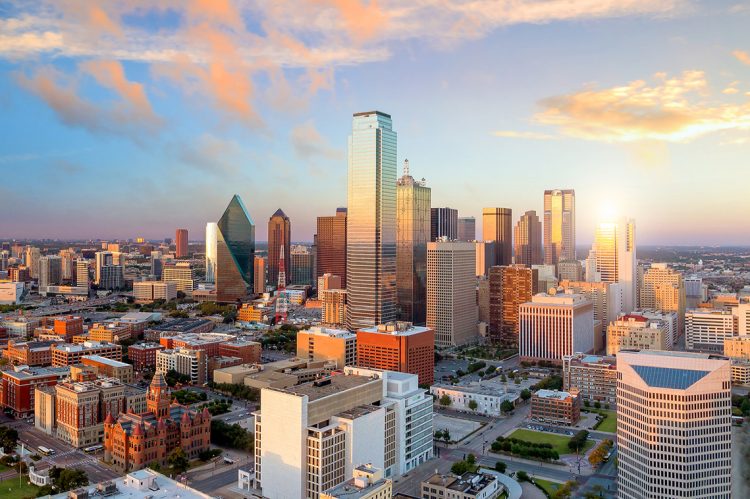Downtown is the heart of a city, both literally and metaphorically. While downtown areas grew less popular with the pandemic, 2023 might be the time for their comeback.
StorageCafe’s latest report analyzed the 30 most populous cities in the U.S. and ranked them by cost of living (rent-to-income ratio, cost of groceries), rental inventory, apartment amenities (personal space, green units, unit quality, access to workout facilities), safety, restaurants, cultural and shopping options and more.
The report found that the South occupies almost half of the top 10 spots, and Texas claims three of those spots.
Key highlights:
- At the top of the rankings is Dallas, Texas, which ranked best in apartments located in luxury buildings (81% of units), access to fitness centers (95%), and personal space (over 995 sq ft of space per person). Downtown Dallas’s unique range of features and amenities helped it get crowned as the best central area in the country for urban life enthusiasts.
- Second is Austin, Texas, which ranked best in green apartment buildings, personal space (939 sq. ft./person), and educated population. With 14.6 restaurants and 2.8 theaters per 1,000 locals, downtown Austin is one of the liveliest areas in the country.
- Next up is Chicago, Illinois in third, which ranked best in educated population (83% college educated), green apartment buildings (23%), and rent/income ratio (rent below 30% of income). Chicago also has great access to fitness centers (90%),
- Boston, Massachusetts is fourth, and ranked best in luxury buildings (93%), green buildings (25%), and access to restaurants (18.4 restaurants and 2.9 theaters per 1,000 people). The city also ranks high in education at 80%.
- Seattle, Washington follows up in fifth, ranking best in rent/income ratio (rent is 28% of income), green buildings (over 20%), and neighborhood safety.There’s also fitness centers in 79% of apartment buildings, 76% of adults are college educated
- Sixth is Nashville, Tennessee, which ranked best in Apartment availability related to population, and actually comes first for its restaurant (22.4/1,000 people) and theater (19.4/1,000 locals) options. The city also has good living space at 777 sq ft of space/person, 78% of units offer access to fitness centers, and 65% of buildings are luxury.
- Next is Houston, Texas in seventh, ranking best in rent/income ratio (22%), living space (890 sq ft of space/person), access to fitness centers (more than 90%). In addition, 79% of Houston’s city center apartments are located in luxury buildings
- Lastly, eighth, ninth and tenth are Columbus, Ohio; San Diego, California and Phoenix, Arizona.
Major takeaway:
“Many cities have made good strides toward creating inclusive urban environments with livability and sustainability key in achieving future-ready status. Downtown areas across the country have seen intensified multifamily construction as more people seek walkability and better connectivity in their neighborhoods. Southern hubs – which have been on migration radars for over a decade now – have had their central areas enhanced and reinvented to respond to current resident needs. Dallas and Austin in Texas and Nashville, Tennessee, are just some of the cities that offer the live-work-play concept in their downtown areas,” said Doug Ressler, Business Intelligence Manager at Yardi Matrix. “The emergence of the high-rise as a blueprint for a modern living has been instrumental in creating vibrant downtowns. To be able to navigate current challenges, cities must focus on improving digital and physical infrastructure so their residents can live in safe, connected communities all while minding their carbon footprint.”
For the full report, click here.












